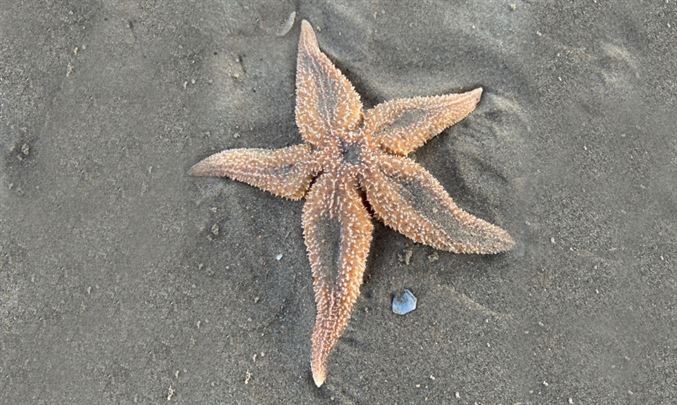Asterias, a marine organism, boasts a distinctive body characterized by radial symmetry and a pentamerous arrangement. Its body comprises a central, pentagonal central disc from which five elongated, evenly spaced projections, known as rays or arms, radiate outward. However, in certain genera, the number of arms may exceed five. For instance, species like Solaster may have 7-14 arms, while Heliaster can possess more than 40 arms.
In terms of size, Asterias typically ranges from 10 to 20 centimeters in diameter, although variations in size exist, with some forms being notably smaller or longer. The creature’s coloration is diverse, encompassing shades of yellow, orange, brown, and purple. The body exhibits two distinct surfaces: the upper convex and darker side is referred to as the aboral or abactinal surface, while the lower surface is flat, less pigmented, and termed the oral or actinal surface. Importantly, the oral and aboral surfaces do not correspond to the ventral and dorsal surfaces but are aligned with the left and right sides of the bilaterally symmetrical larva. The regions of the central disc between the arms are known as inter-radii, with the axes occupied by the arms referred to as radii. Notably, Asterias lacks a well-defined head.
